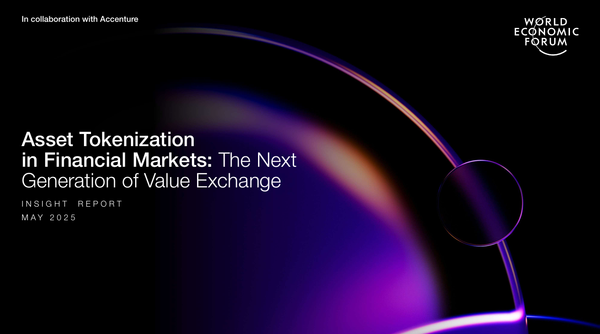Asset Tokenization in Financial Markets: Analyzing Key Concepts, Value Propositions, and Adoption Barriers




The exploration into asset tokenization heralds a revolutionary phase in the financial markets. This comprehensive analysis uncovers the transformative potential of tokenization, focusing on its foundational concepts, value propositions, barriers, and impacts highlighted by collaborative research from leading organizations including the World Economic Forum and Accenture.
At its core, tokenization refers to the process of issuing a digital representation of an asset using a programmable ledger. These digital tokens stand as verifiable entities that duplicate the ownership and rights of real-world or financial assets, enabling seamless exchange of information and value globally. The process involves creating unique tokens that are recorded, traded, and settled on a blockchain, promising enhanced ownership transparency and transaction efficiency.
Tokenization is defined as the creation of a digital token that represents an asset on a programmable ledger. These tokens are provably unique and can be legally and operationally traded, bringing forth a new era of digital asset management. Through tokenization, financial and non-financial assets are represented in a format that is transferable within the confines of a digital ledger, thus revolutionizing asset ownership and trading methods.
Programmable ledgers, commonly referred to as blockchain or DLT systems, support processes defined by smart contracts. These ledgers can be public or private, permissioned or permissionless, each providing various levels of flexibility and control. They facilitate the integration of essential data onto the ledger itself, defining the assets' core properties and ensuring operational fluidity between on-chain and off-chain activities.
Tokenization is categorized into two primary models. The first involves backed tokens, which are tied to an off-chain asset, and the second encompasses native tokens, which are issued and exist exclusively on-chain. Each model demonstrates unique implications for issuance, value proof, transaction settlement, custody, and redemption. Tokenization fundamentally enhances settlement operations and is intricately linked to the asset life cycle, presenting a streamlined approach to asset management.
Tokens are characterized by six critical attributes: asset definition, embedded rights, provenance, ownership status, compliance rules, and permission controls. These attributes endow tokens with transparency, security, and operational efficiency. By embedding vital asset information directly into tokens, they promise enhanced investor protection and trust, potentially restructuring how financial markets operate.
In financial transactions, settlement assets are pivotal, acting as the means for discharge of obligations in transactions involving delivery versus payment scenarios. Various forms of settlement assets are explored, including fiat-backed stablecoins and central bank money. The choice of settlement asset impacts liquidity, risk, and speed, highlighting the careful balance required to achieve operational efficacy.
Asset tokenization is revolutionizing financial markets by offering distinctive features that enhance efficiency and accessibility. In simpler terms, tokenization acts like a digital transformation for traditional financial systems, streamlining processes that were once cumbersome and opaque. The value proposition encompasses programmability, which enables automated compliance and risk management through smart contracts, fractionalization that allows smaller investments in high-value assets, and composability that creates interconnected financial products.
Tokenization aims to erase unnecessary complexity in financial dealings, thereby lowering costs and expanding access for investors across the globe. By integrating compliance into digital tokens, secondary market liquidity improves, making foreign markets more accessible to investors. The enhanced transparency provided by blockchain technology creates an immutable record of ownership and transaction history, while global accessibility breaks down traditional barriers to international investment.
Despite the evident benefits, several hurdles persist that could delay widespread tokenization. The integration of tokenized markets with existing financial systems presents a significant challenge. Financial institutions face potential discrepancies when reconciling tokenized systems with their internal books. A gradual approach to infrastructure adaptation can prevent hefty infrastructure investments, bolster confidence, and accelerate adoption.
Tokenization's widespread adoption necessitates robust and harmonized standards. A single dominant global standard does not yet exist, as evidenced by the need for greater industry collaboration. Critical areas for standardization include roles and responsibilities, token standards, settlement processes, cross-chain interoperability, and reference data. Successfully establishing these standards can inspire efficiency and cooperation across globally diverse markets.
Ensuring seamless movement across different programmable ledgers is crucial for the fluid operation of tokenized systems. Financial entities are working with a multitude of ledgers, with initiatives like Chainlink's Cross-Chain Interoperability Protocol leading the way in addressing interoperability challenges, such as methodology for cross-chain liquidity management.
Insufficient liquidity within secondary markets is a significant roadblock for tokenized asset trade. Despite substantial issuance, turnover volumes remain low, making the full real-world application of secondary markets ineffectual at current scales. Market makers and dual-listing strategies are critical to unlocking liquidity, while governance structures must evolve to incentivize and support deeper market activity.
Standardized identity verification is essential for furthering tokenization, but on-chain identities currently struggle with privacy concerns. Innovations such as zero-knowledge proofs offer solutions for safeguarding data while maintaining compliance. However, regulatory requirements necessitate thorough legal frameworks ensuring on-chain identity effectiveness and regulatory adherence.
The realm of financial markets is experiencing transformational change through tokenization, a digital process that is redefining asset ownership handling. The potential ripple effects of this technology are compelling, promising new market structures and emerging roles for both existing players and new entrants.
Tokenization is expected to revolutionize market structures by altering the roles of intermediaries. While some may anticipate displacement, research emphasizes that intermediaries like brokers and clearinghouses will continue to play vital roles, albeit in evolved capacities. This evolution parallels the Electronic Book Entry era, where intermediaries adapted to digital integration rather than being eliminated.
The introduction of asset tokenization anticipates more direct and instantaneous asset trading, powered by smart contracts and the immutable nature of blockchain technology. Automated trader-driven solutions on platforms like decentralized exchanges could become mainstream, offering greater efficiencies. Nevertheless, regulated markets highlight the need for a balanced approach to adopt these innovations without compromising stability and investor protection.
Incumbent service providers, ranging from central depositories to custodians, are realigning their strategies to maintain relevance in a tokenized economy. Traditional custodians are adopting multi-tiered custody offerings to cater to both conventional and digital asset safekeeping demands. The adaptation extends to brokerage firms, which are expected to implement both on-chain settlements and maintain capabilities for advisory roles.
The expansion of tokenization introduces opportunities for novel market roles. We can anticipate the rise of new intermediaries like token asset issuers, digital custodians focused on secure cryptographic key management, and digital-native exchanges facilitating seamless trading and liquidity. This environment fosters fertile ground for startups and established technology firms to carve out niches in this developing space.
With tokenization enabling swift and secure asset digitization, the potential for financial product innovation is immense. New asset classes, real-time clearance, and tailor-made investment products culminate in a new order of financial offerings, blending technological prowess with user-focused service delivery. These products harness the benefits of tokenization, such as reduced trade execution time, improved liquidity, and broader investor participation.
Tokenization's ability to trigger extensive market changes is anchored in its fundamental attributes: programmability, fractionalization, composability, and a shared system of record. These features not only redefine asset interoperability but also level the playing field for market entry and participation. As financial markets embrace these changes, the potential for innovation and expansion appears limitless.
The progression of tokenization within financial markets portends a shift towards a more efficient, accessible, and globally interconnected financial ecosystem. However, this transformation demands careful navigation through collaborative regulations, standardizations, and security considerations to fully capitalize on its capabilities. The tokenization wave presents a compelling horizon for financial markets, one where digitized assets become the cornerstone of a more transparent, efficient, and inclusive financial ecosystem. With coordination between public and private stakeholders, the road to a seamless token-driven market is unfolding with unprecedented momentum.
Comments